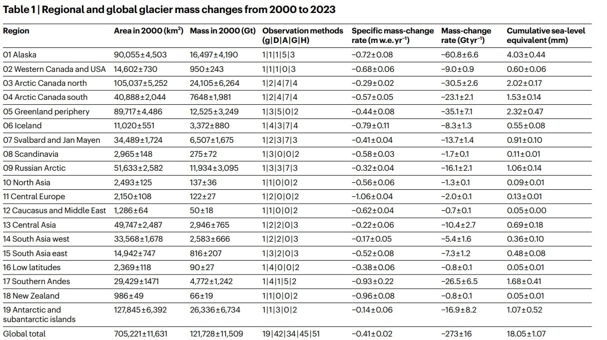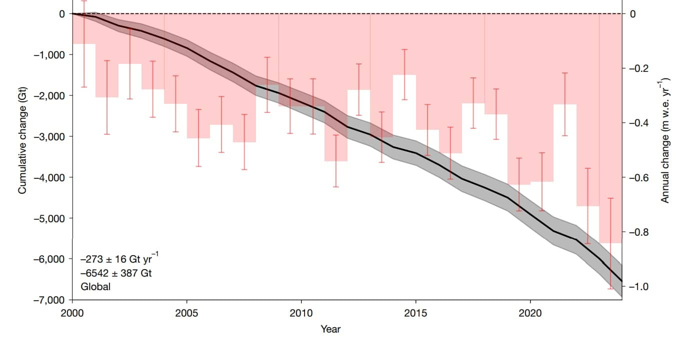Glacier melting has accelerated by one-third over the past decade.
According to estimates, in 2000, the area of glaciers covering the Earth, excluding the major continental ice sheets of Greenland and Antarctica, was 706 thousand square kilometers, with a volume of just over 158 thousand cubic kilometers. If all this mass were to melt, sea level would rise by 324 millimeters.
Glaciologists monitor the situation not only through expeditions, as direct observations cover no more than 1% of glaciers. Remote sensing methods from satellites provide geodetic, gravimetric, and altimetric data. Digital Elevation Models (Digital Elevation Model) play a significant role as well. All this combined gives a rough picture of ice mass changes on the planet over time while simultaneously complicating the analysis of heterogeneous data.
Researchers from the GlaMBIE collaboration have compiled results from various observations and calculated the rate of ice loss on the planet, excluding Greenland and Antarctica. An article about this was published in the journal Nature.

The authors analyzed 233 estimates of glacier mass change for 19 regions. The data were gathered from 35 research groups, comprising about 450 participants. The study covered the period from 2000 to 2023.
During this time, glaciers lost 6.5 gigatons of mass. This contributes 18 millimeters to sea level rise. The melting rate increased by 36% from 2012-2023 compared to 2000-2011. The last five years marked the most significant ice loss, with an annual decrease of 400 gigatons, including a record 2023, which saw a loss of 548 gigatons.

When compared to ice sheets, the losses from all other glaciers over the decade from 2002 to 2021 were 18% greater than those from Greenland and were twice the losses from Antarctica.
All 19 regions studied experienced glacier retreat. The largest contributions to global melting came from Alaska and the Canadian Arctic, accounting for 22% and 20% respectively. Next were the outlet glaciers of Greenland at 13%, followed by the Southern Andes at 10%.
According to the researchers' calculations, since 2000, the global ice mass has decreased by 5%, with regional losses ranging from 2% to 39%. The largest losses were observed in Central Europe (39%), the Caucasus (35%), and New Zealand (29%).
The calculations from GlaMBIE do not contradict previously obtained data on a global scale, but there are discrepancies in regional assessments. The new data are more accurate and can serve as a basis for comparing various observations and calibrating models. They will be useful in preparing the seventh assessment report of the Intergovernmental Panel on Climate Change under the UN.